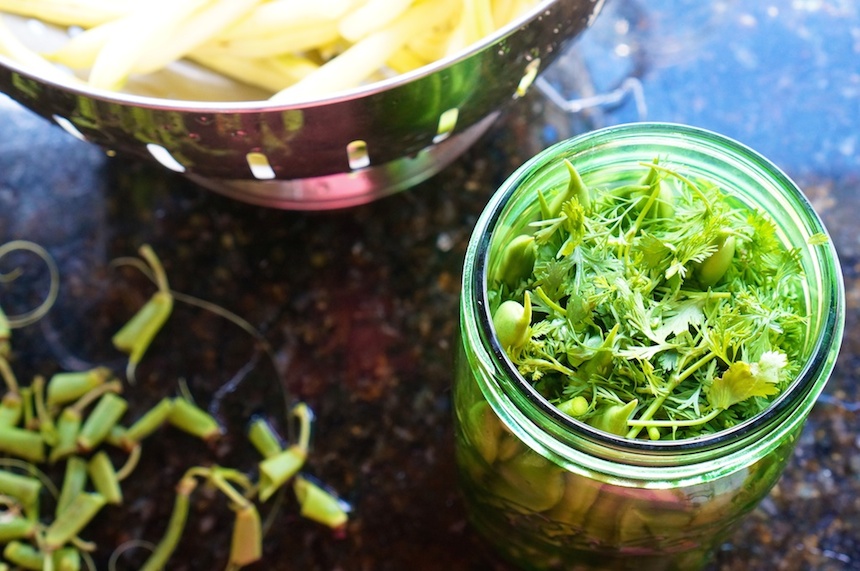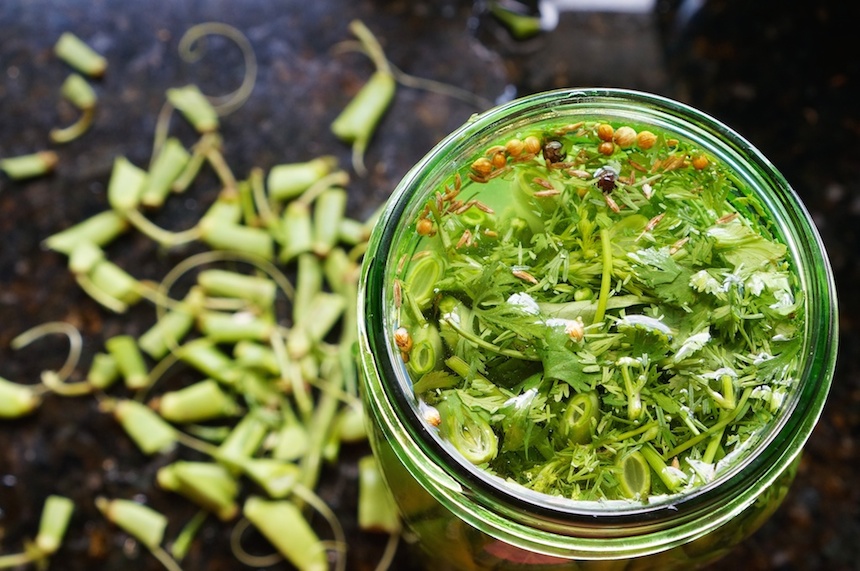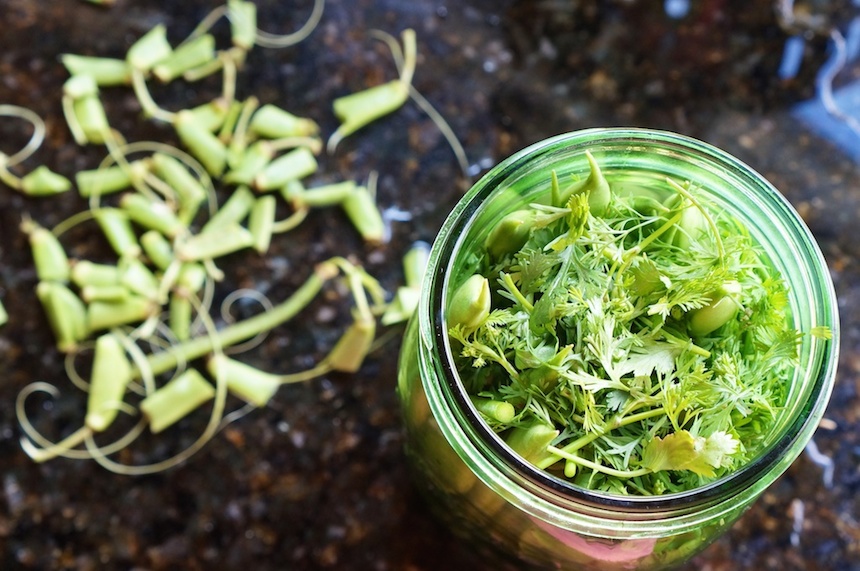‘Tis the season for pickling! It is the perfect way to preserve all that beautiful late-summer produce so it can be enjoyed all year long. Plus, if you’re making lacto-fermented pickles you’re cultivating beneficial bacteria (probiotics) to give your body a boost in immunity, gut-health, and mood.
I’m into pickled vegetables for many reasons. The health benefits are definitely near the top of the list, but I also can’t bear to let good food go to waste. If you’re growing your own veggies or have a CSA you probably know the feeling. When you just can’t eat lemony sautéed green beans for one more meal, you know it’s time to pull out the pickle jars. And the jars are half the fun! I have a robust jar collection and I love any excuse to use them (plus it helps me justify having so many!).
- About 3 cups fresh green, yellow, and/or purple beans (however many you need to tightly fill your jar)
- ½ cup fresh cilantro, chopped
- ½ tsp. coriander seeds
- ½ tsp. black peppercorns
- ½ tsp. cumin seeds
- 3 cloves fresh garlic, peeled and smashed
- 4 cups water
- 2 tbs. salt
- 1 tbs. whey from plain yogurt (the whey is the watery liquid that forms on the top of your yogurt)
- Wash the beans and remove their stems.
- Put dried spices and smashed garlic cloves in the bottom of a clean jar.
- Pack green beans tightly into the jar on top of the spices.
- Add fresh cilantro to the top of the green beans.
- Combine water, salt, and whey in a separate bowl and then pour over the beans. Make sure beans are fully covered and leave at least a ½ inch of head space at the top of the jar.
- Cover the jar with a clean dish towel or paper towel held on with a rubber band.
- Leave the jar on the counter for 3 - 7 days until desired flavor is achieved (taste them daily).
- Once the beans are finished, cover with a tight lid and place in the fridge for longterm storage.

So what’s the difference between vinegar pickles and lacto-fermented pickles? It all comes down to that signature pickle tang. Vinegar pickles use the sour taste of vinegar to get that taste, while fermented pickles use the acids that naturally occur as the beneficial bacteria grow. Both are delicious, but only fermented pickles have beneficial bacteria (probiotics) that populate your digestive tract.
These bacteria help the body to digest and assimilate your food. They literally line your gut to better absorb nutrients and keep larger food particles and toxins out of your blood stream. Ever heard of leaky gut? That’s what happens when your lining isn’t strong enough and the funky stuff is able to pass through. Definitely not good!
Interestingly, these bacteria support many aspects of health, not just digestive function. One of my favorites is their powerful impact on the immune system. They also help reduce inflammation, improve your mood, and support weight loss.
Fermentation preserves nutrients in food, breaks nutrients down into more easily digestible forms, and actually creates new nutrients. During the fermentation process microbial cultures create B vitamins, including folic acid, riboflavin, niacin, thiamin, and biotin. Pretty wild!
I try to eat some type of fermented food each day, and encourage my clients to do the same. Having a range of different bacteria from different foods gives you the strongest microbiome in your gut. Snack on these beans on their own, toss them into a salad, or use as a condiment or side dish. Just be sure not to cook them, which will kill the good bacteria.
Happy fermenting!



Leave a Reply